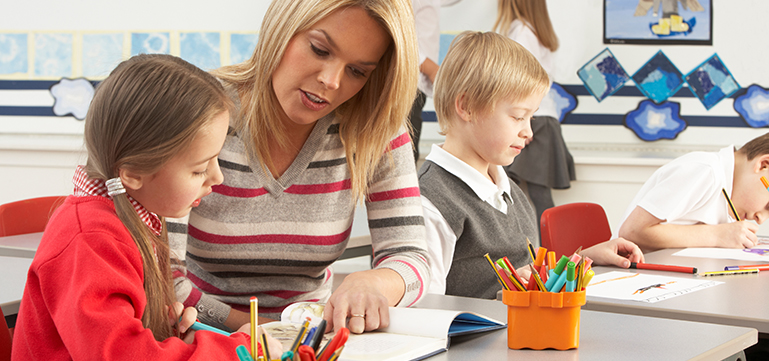Working collaboratively on school improvement

Quick links:
Information about the school
Somerton Primary School is in the city centre of Newport. There are 185 pupils on roll aged from 3 to 11 years of age, including 20 part-time nursery pupils. They are taught in six mixed-age classes with a few pupils spending part of their day in nurture provision.
The three year rolling average of pupils eligible for free school meals is around 45%, which is well above the national average of 18%. The school identifies around 30% of pupils as having additional learning needs. Just over a quarter of pupils come from an ethnic minority background and around 24% speak English as an additional language. A very few pupils speak Welsh at home.
The interim executive headteacher took up her post in September 2016 and is also the substantive headteacher of Eveswell Primary School. The local authority has opened a consultation into the possibility of creating a permanent federation between the two schools.
Context and background to the effective or innovative practice
Somerton Primary School started working collaboratively with a nearby school in 2016. The two schools are very different in size and demographic and are at different stages in their improvement journey. The schools decided to embark on a joint journey of improvement, to develop the new curriculum, share best practice and support each other in improving outcomes for all pupils in both schools.
Description of nature of strategy or activity
Initially the schools worked on developing relationships between staff. They arranged joint training events and looked for efficiencies in using time to support the learning of both schools together. Staff worked in their year groups and started to share ideas and experiences. They quickly identified areas of common interest in their teaching. This led to the sharing of pupils’ work and planning together, starting with a few lessons or shared projects.
They then went on to develop policies and schemes of work across both schools. Staff meetings and all professional learning and training days were conducted together, in both schools. Staff used technology to share planning and visited each other’s classrooms. As the schools worked closer together, it became easier to identify shared objectives. Although the schools have decided to keep two separate school development plans, there are common threads within each plan. As a result, there is more sharing of resources and staff expertise in order to deliver the improvement plans of both schools.
Leaders and staff identified areas of strength in provision in both schools. The schools note that all staff were extremely professional in opening up their classrooms, their planning and taking an open and honest approach to quality of provision and standards. In the second year, as staff developed a wider understanding about each other’s schools, everyone, including governors, undertook joint school self-evaluation activities. Staff focused on their own school but shared what was happening in the other school and the outcomes of self-evaluation.
These self-evaluation activities were repeated with both staff and governors in the following year. On this occasion, staff worked in shared groups on aspects of self-evaluation, discussing elements of provision and standards in both schools and identifying where each could strengthen next year. Staff see the collaboration as a beneficial and useful activity that supports them in their teaching and professional development. Within the last year, staff have initiated action research projects linked to an aspect of the school development plan. They have worked in groups of three to ‘try things out’ and evaluate the impact on standards and provision. One teacher has taught in both schools to further her own development. Senior leaders have joint meetings, taking ownership of developments across both schools with a shared sense of moral purpose.
What impact has this work had on provision and learners’ standards?
Standards of teaching have improved and staff regularly discuss pedagogy within and beyond their own setting. They have frequent opportunities to see practice elsewhere with meaningful, ongoing professional development followed up by actions as necessary. For example, staff worked very effectively to improve the outdoor learning provision and both schools have seen the impact of this work on pupil engagement and wellbeing. Working in groups of three with a focus on reading raised standards, and pupils now choose to read for pleasure. Most importantly, expectations are very high across both schools and Somerton staff feel fully included in the wider school improvement agenda. Working alongside a pioneer school, they have been at the forefront of national developments.
How have you shared your good practice?
We have shared our developments with the regional consortium, two school clusters and more widely, through one school being a pioneer school.